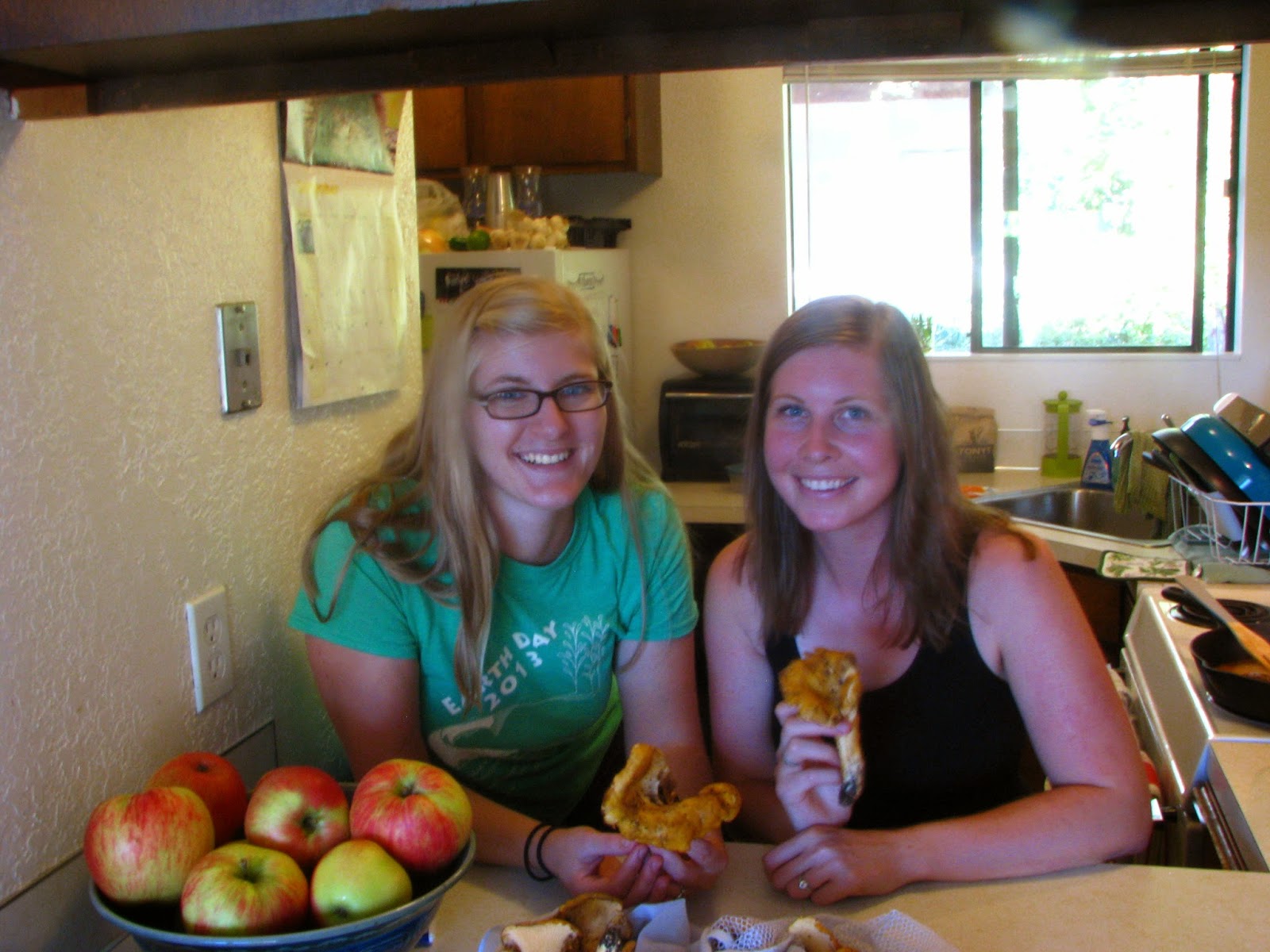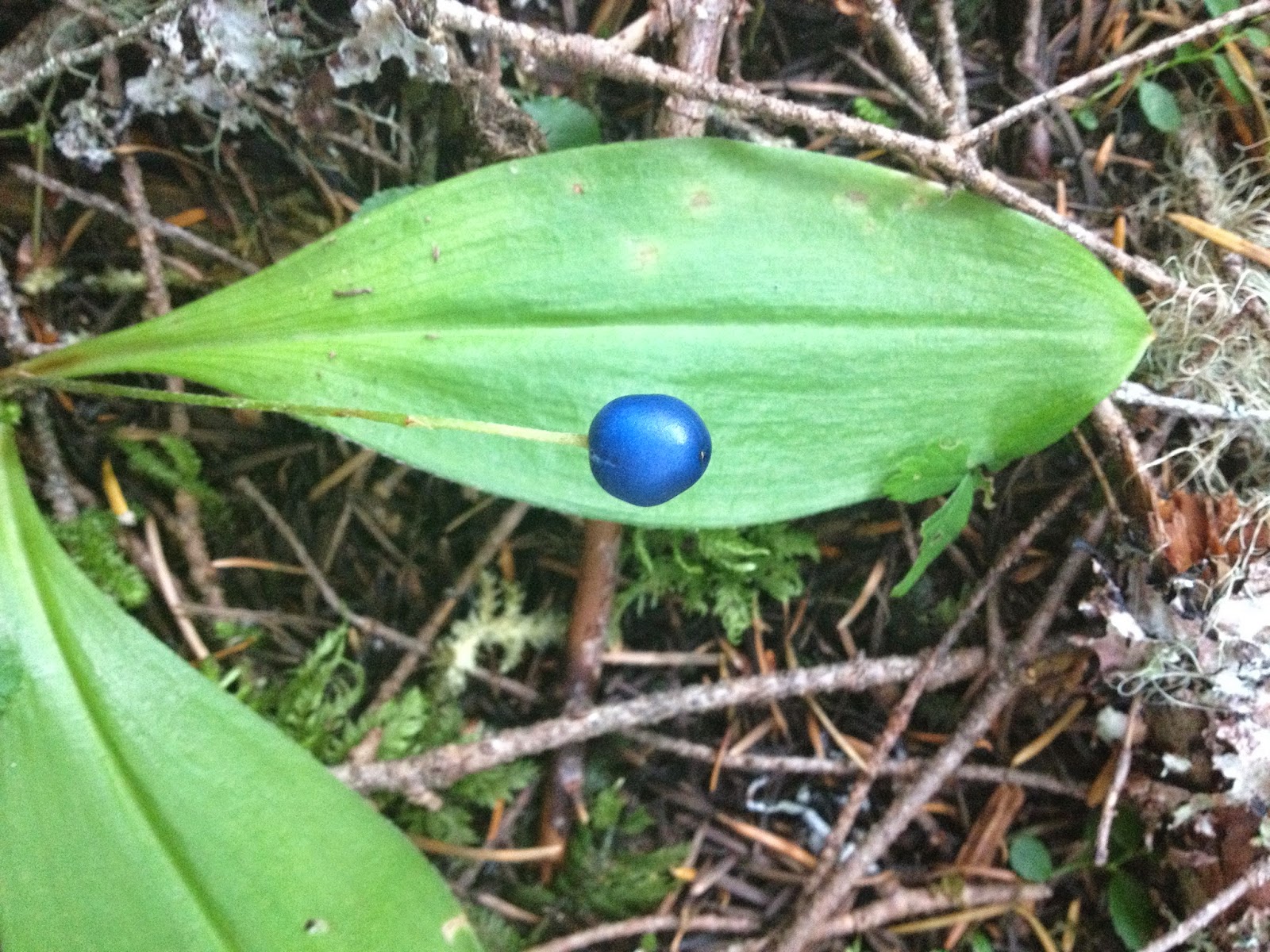 |
| Source |
familiar, the American chestnut was once an abundant ecologically and culturally important tree native to Eastern North America. While there are pockets that survived and some regrowth, the population was devastated by the chestnut blight. Introduced in the early 1900's, the blight (a pathenogenic fungus) caused major die-off and had infected most mature trees by the 1940's. There has been a lot of research since then centered on how to restore the population, and finally there is a viable opportunity! Skim the press release, its neat!
 |
| Photo - Katie Duane |
 We started looking in late September when Brandon and I stumbled across some on a hike and thought hey, time to started hunting!
We started looking in late September when Brandon and I stumbled across some on a hike and thought hey, time to started hunting!First, Katie and I went a-looking, and with many squeals of delight we alighted on emerging patch after patch in the SuperSecret location where the Otter and I found them last year. And we had success!
The very next day, the boys were free to join us, so we checked another muchlesssecret spot we spotted while hiking. The spot allocations are based on the perceived knowledge the public has as to the presence of the Chanterelles. Spot one: no obvious empty mushroom holes and no cut ends; Spot two: lots of evidence of other foragers, and discarded mushrooms. In the center is an unknown peculiar fungal apparatus, to the right, Chanterelles!
 |
| Photo - Katie Duane |
 |
| Photo - Katie Duane |
 |
| Photo - Katie Duane |
We take caution - we don't pick every firm lush Chanterelle we stumble upon, we take at most 50%. I am probably coming off as a self-righteous know-it-all, but it is infuriating to me to be wandering along and track across discarded mushrooms. If they weren't good enough, why did you pluck them in the first place? Sure I picked one or two bads before I got the hang of it, but the consistency of shroom tossing is... sad.
 |
| Photo - Katie Duane |
 |
| Photo - Peter Duane |

When Brandon and I returned in late October, it was no longer T-shirt weather, it looked more like this... On Saturday afternoon Katie and I went out, then Brandon and I went again the next morning. Clearly we were milking it for all it was worth.
For a while we wandered, finding many soggy and too-old mushrooms of magnificent size, and then we struck it. The mushroom motherlode. He went uphill as I went down, and I laid my eyes upon a remarkable sight; a 10 x 15 foot dense patch of beauties.
It of course called for silly pictures!
We came home that weekend with 8+ pounds of Chanterelles.
Chanterelles are a mycorrhizal fungus, meaning they have a mutualistic relationship with the roots of vascular plants, specifically here, conifers. We have had our best luck under Douglas fir and hemlock stands, but in other places they are associated with birch, beech and oaks.
 Chanterelles are the perfect fall food, containing significant amounts of Vitamin C, Potassium and Vitamin D, the latter being something we in the PNW struggle with access to for about 6-8 months of the year. According to Wiki, people have been eating Chanterelles since the 1500's, so they have definitely stood the test of time. Some claim they smell apricoty when fresh. I wouldn't go that far (am I an apricot snob? Maybe.) but they do definitely smell faintly sweet and fruity when you have a nice basketful.
Chanterelles are the perfect fall food, containing significant amounts of Vitamin C, Potassium and Vitamin D, the latter being something we in the PNW struggle with access to for about 6-8 months of the year. According to Wiki, people have been eating Chanterelles since the 1500's, so they have definitely stood the test of time. Some claim they smell apricoty when fresh. I wouldn't go that far (am I an apricot snob? Maybe.) but they do definitely smell faintly sweet and fruity when you have a nice basketful.
Here's the obligatory Chanterelle glamour shot.
We have also foraged a bit here, and also at our training. We were successful but to a much lesser degree. We did see many other stellar fungal bodies popping up here and there.
 So now I can tell you we have had risotto, pizza, soup, gravy, quiche and best of all (although the soup and risotto are very hard to beat) a galette with onions and cherve slightly modified from A Year of Pies, which Rachel gifted me a while ago. The surplus (because we had a week-long training to go to and several pounds left) was dry sauteed down, plunked into cupcake tins, and frozen. So now we have about a dozen little shroom cakes in the freezer awaiting future use. Ah to be rich!
So now I can tell you we have had risotto, pizza, soup, gravy, quiche and best of all (although the soup and risotto are very hard to beat) a galette with onions and cherve slightly modified from A Year of Pies, which Rachel gifted me a while ago. The surplus (because we had a week-long training to go to and several pounds left) was dry sauteed down, plunked into cupcake tins, and frozen. So now we have about a dozen little shroom cakes in the freezer awaiting future use. Ah to be rich!Another glamour shot for the road. Happy Sunday!



























































